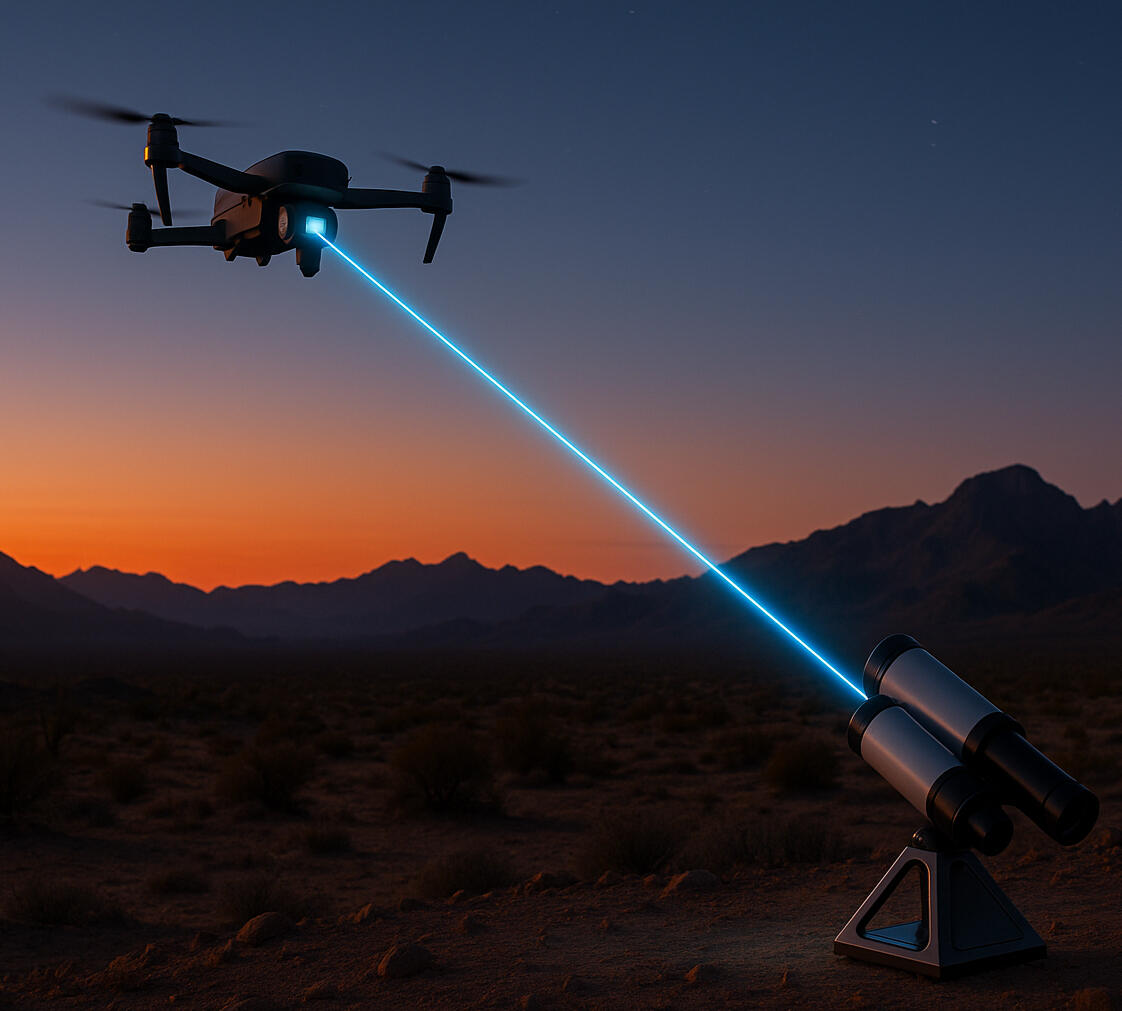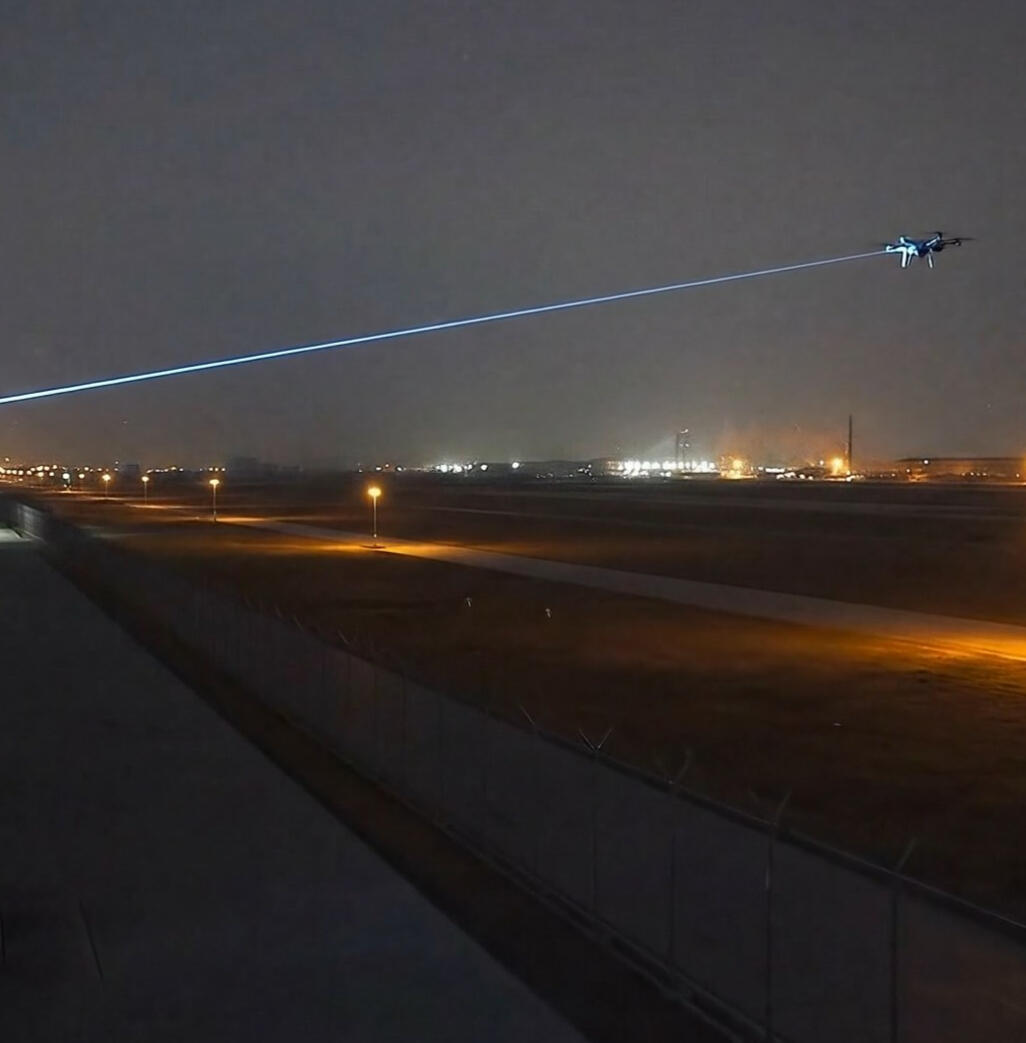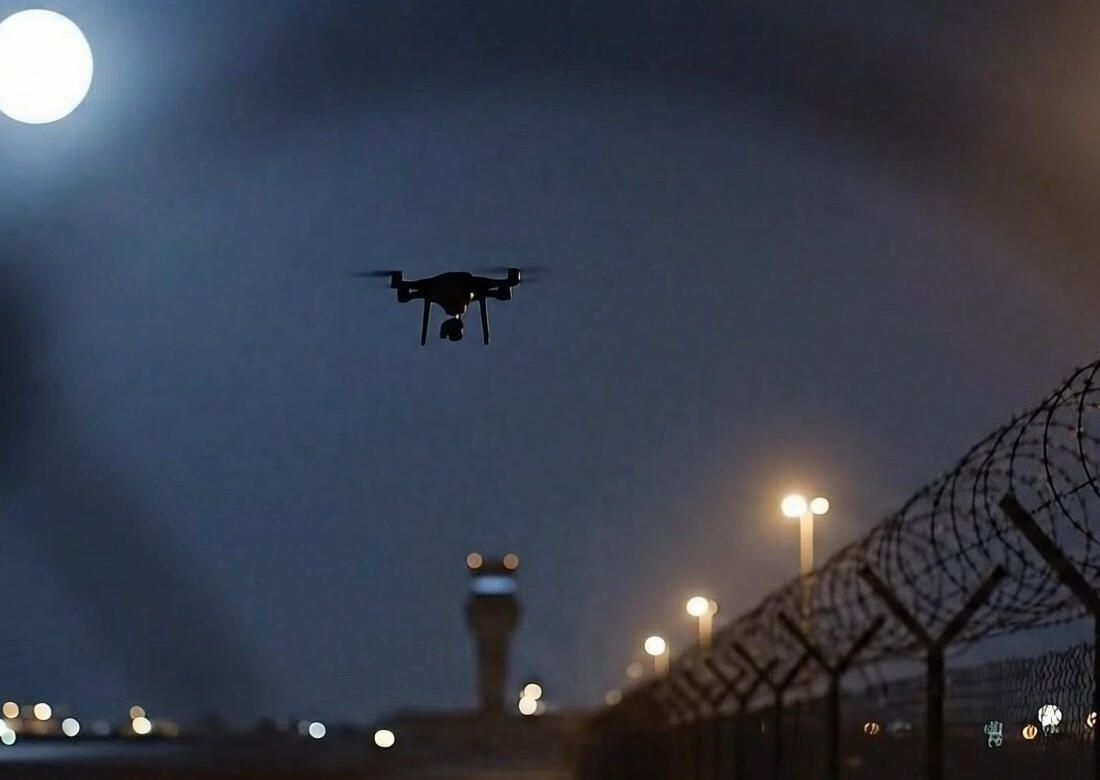Laser power in flight keeps Intelligence, Surveillance, and Reconnaissance drones airborne for hours. No landings. No gaps.
Keep the watch unbroken
Backed by ESA BIC | Built in Europe | Safety-first architecture
Mission
Problem
Rotations create blind minutes
Most multirotors fly ~20–40 minutes. Every rotation forces landings, handoffs, and minutes without custody when the picture is lost.
Solution
One steady overhead
No handoffs and no blackout windows. Decisions stay live for the whole operation. Operate continuously whenever you need it.
Quantified example
30-minute endurance → ~48 battery swaps per 24h and 2–4 minutes of blindness per swap. That’s 1.6–3.2 hours of missed awareness per day. With power in flight: 0 swaps, 0 blind minutes.
Power in flight
Transmit
A ground station turns electricity into a narrow, invisible beam.
Lock
LiDAR auto-tracking (<0.1°) keeps aim tight while the drone moves.
Convert
An onboard receiver converts light back to power while flying.


Field-ready
Demonstrated stability
Multirotor demo: stable 100 m power-in-flight link with continuous tracking
Fixed sensor link: verified 1.5 km line-of-sight delivery with steady output
Automatic hold and controlled shutdown on loss of lock
Built with partners
Program support from ESA BIC and industry mentors
European design and manufacturing across optics and electronics
Designed for ISR workflows
Receiver kits for multirotors and fixed sites, quick-mount form factors
Day/night operations with automatic safety interlocks and remote arming
Where persistence pays first
Border security
Hold the picture on crossings without rotations. Maintain custody for hours.
Critical infrastructure
Substations, ports, and rail. End‑to‑end custody during maintenance and incidents.
Disaster response & civil protection
Wildfire, flood, and SAR. A steady overwatch for the command post.

Why not tethers, pads, or swaps?
Tethered drones: restricted altitude and maneuvering, vehicle position limits, and added risk over people and assets.
Charging pads: require landing, flat surfaces, and clear ground. Mission custody is broken at every landing.
Battery swaps: require staff, vehicles, and logistics. Each swap creates blind minutes and higher OPEX.
Laser power beaming
Power in flight: works at distance and in motion with zero human intervention.
Vision
The energy‑in‑motion layer
Persistent custody will be the default for ISR, defense, and critical infrastructure. Batteries alone cannot deliver it. A safe, controllable power link in the air is inevitable. If we do not build it, operations stay battery‑bound, minutes of awareness are lost every day, and Europe cedes leadership in a dual‑use capability we should own.

